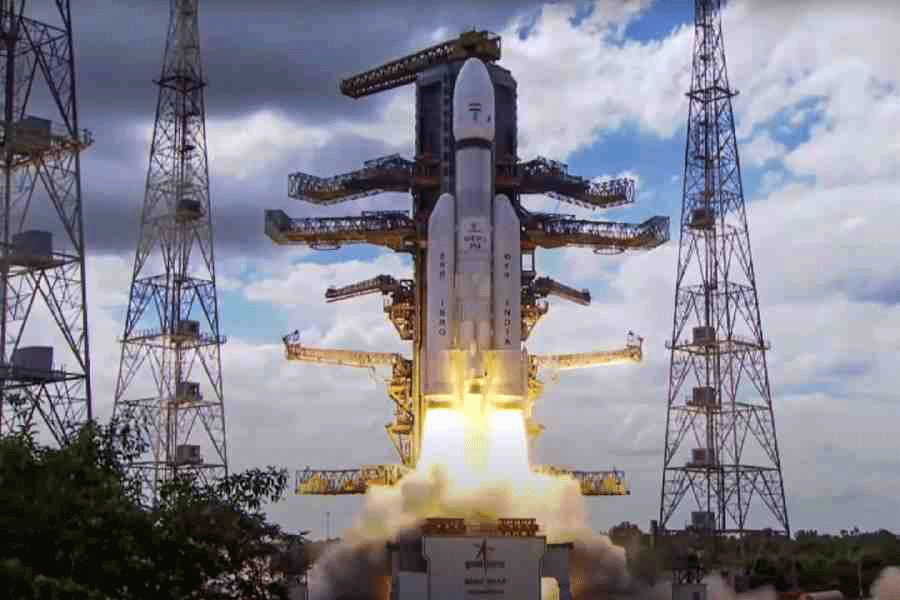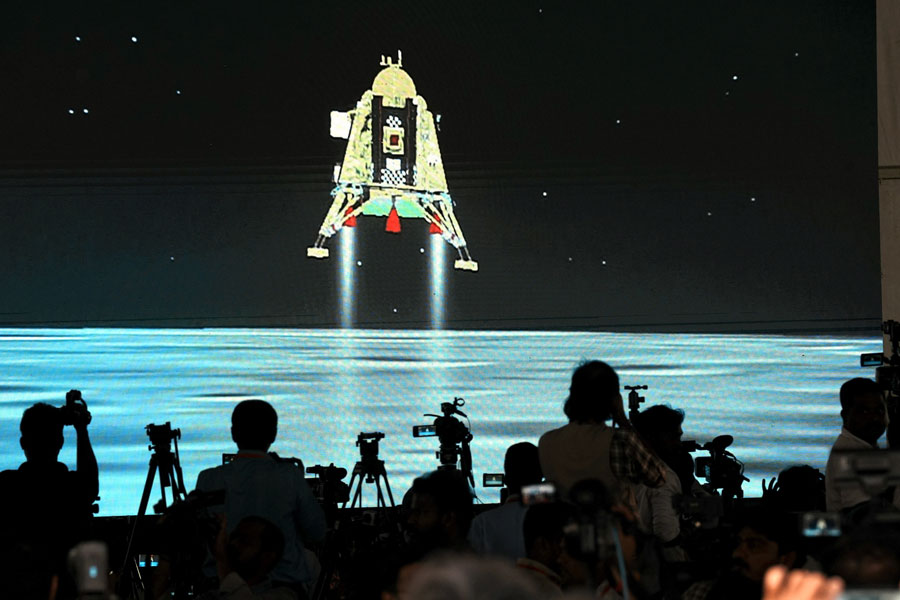The rover aboard the Chandrayaan-3 lander module has moved onto lunar terrain and ground control engineers have turned on three scientific instruments on the lander, India’s space agency said on Thursday, a day after the spacecraft’s soft landing.
“All activities are on schedule. All systems are normal…. Rover mobility operations have commenced,” the Indian Space Research Organisation (Isro) said. The robotic rover had “ramped down the lander and India took a walk on the moon”, Isro said.
The Chandrayaan-3 mission’s next phase involves using the instruments on the lander and two on the mobile rover to study the lunar surface, geology and “atmosphere” over the next 11 to 12 days while the area remains sunlit.
Both the lander and the rover are “perfectly healthy, everything is working very well, and the lander is transmitting its onboard data”, Isro chairman S. Somanath told PTI. The rover has gone on the moon’s surface and “we’re trying to make sure it moves further distances so that we can conduct certain experiments… today it will mostly be further movements”, he told the news agency.
The three instruments on the lander activated on Thursday are designed to measure lunar seismic activity, analyse the heat properties of the lunar surface near the polar region, and measure electrons and charged atoms in the lunar atmosphere.
“Things look fine — we’re engaged in operations as planned,” said Anil Bharadwaj, director of the Physical Research Laboratory, Ahmedabad, an Isro unit that was involved in the development of some of the scientific instruments and had helped in evaluating candidate landing sites.
The robotic rover’s movements would require “path planning” to avoid boulders, crevices, or craters on the terrain, Somanath said. The landing site was one among eight candidate sites that met several criteria for sunlight, flat surface and ease of radio communication with Earth, PRL scientists have said.
The Chandrayaan-3 lander module touched down on Wednesday at its intended landing site 650km from the lunar south pole — an unexplored region of the moon that has generated intense scientific interest because of the possibility of water ice to exist in areas under permanent darkness.
The spacecraft’s propulsion module remains in lunar orbit. Isro said an instrument on the propulsion module that looks at light reflected by Earth to help in the search for habitable planets outside the solar system has also been turned on.
India is the first country to soft-land a spacecraft near the lunar south pole and the fourth to reach the moon after Russia, the US and China. This is Isro’s fourth planetary exploration mission after the Chandrayaan-1 orbiter in 2008, the Mars orbiter in 2014, and Chandrayaan-2’s attempted landing in 2019.











